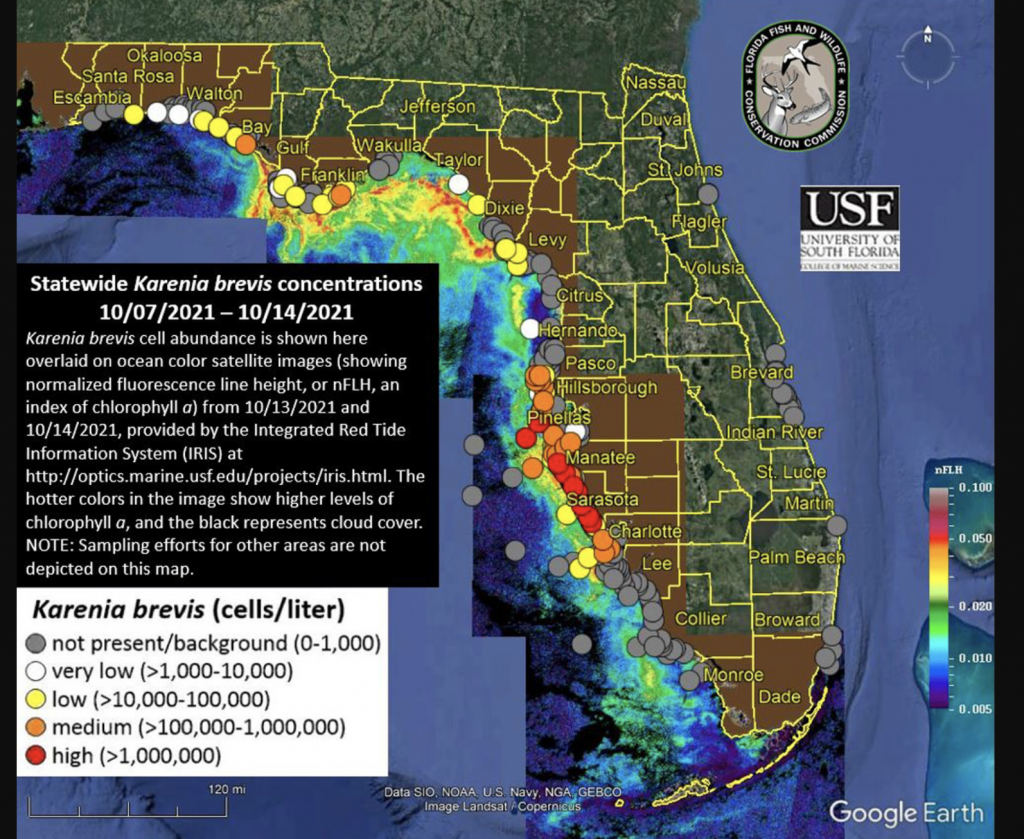Harmful Algal Bloom Update
By Georgia Ackerman, Riverkeeper and Executive Director
A patchy Harmful Algal Bloom (HAB) of the red tide organism, Karenia brevis (k. brevis) continues along coastal Franklin County and other areas of the Gulf coast. Last week, the HAB species Karenia brevis and Pyrodinium bahamense were detected in water samples collected from and/or offshore of Bay, Gulf, and Franklin counties in the Panhandle. More details here. 
FWC web resources explain the following:
- The most common red tide dinoflagellate associated with the Gulf of Mexico is Karenia brevis. Karenia blooms typically form offshore and are of little impact to the coastal communities. However, when the wind and tides are right these blooms will drift towards shore. When they do, fish kills occur and humans have eye and throat irritations. Marine mammals in particular struggle with red tide. As the bloom comes near shore it reaches the bottom of the water column and many of the bottom dwelling fish suffer.
- Many red tides produce toxic chemicals that can affect both marine organisms and humans. The red tide organism in Florida, Karenia brevis, produces brevetoxins that can affect the central nervous system of fish and other vertebrates, causing these animals to die. Wave action can break open breviscells and release these toxins into the air, leading to respiratory irritation. For people with severe or chronic respiratory conditions, such as emphysema or asthma, red tide can cause serious illness. The red tide toxins can also accumulate in molluscan filter-feeders such as oysters and clams, which can lead to Neurotoxic Shellfish Poisoning in people who consume contaminated shellfish.

